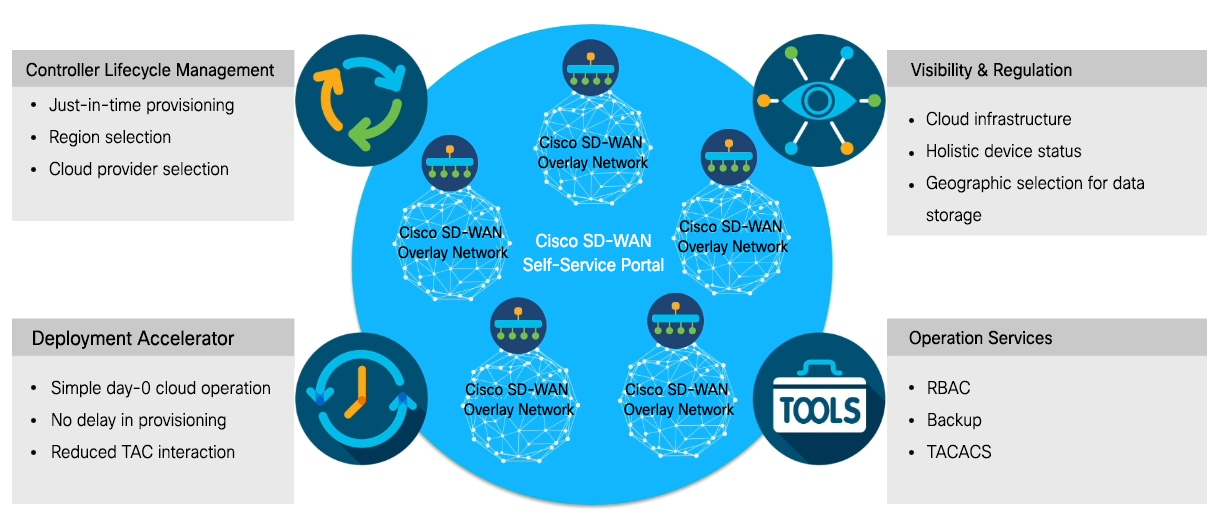Overview of the Cisco Catalyst SD-WAN Portal
The Cisco Catalyst SD-WAN Portal is a cloud-infrastructure automation tool that: which
-
is tailored for Cisco Catalyst SD-WAN,
-
provides a quick way to provision, monitor, and maintain Cisco Catalyst SD-WAN control components on public cloud providers, and
-
supports user authentication and granular access management for high security.
You can provision these control components using the Cisco Catalyst SD-WAN Portal:
-
Cisco SD-WAN Manager
-
Cisco SD-WAN Validator
-
Cisco SD-WAN Controller
-
Optional virtual devices such as the Cisco Catalyst 8000v
Benefits and Functions

The Cisco Catalyst SD-WAN Portal enforces multi-factor authentication (MFA) by default for the portal access. You can configure the Cisco Catalyst SD-WAN Portal to use an identity provider (IdP) that lets you connect any user with any application on any device, using single sign-on (SSO). The Cisco Catalyst SD-WAN Portal is modularized into separate web servers, backend servers, and database clusters to achieve software scalability.
Cisco vMonitor collects data on the cloud infrastructure and generates health notifications about the overlay infrastructure for the customer in a common database. The Cisco vOrchestrator web server is also accessible for advanced features and existing infrastructure-tier customizations, if any, that you use. The Cisco Catalyst SD-WAN Portal uses Cisco vMonitor and Cisco vOrchestrator by way of API calls to orchestrate actions and monitor the overlay.
 Note |
Cisco vMonitor and Cisco vOrchestrator can be accessed by Cisco FedOps only. |
All three applications use a common global database that includes multiple read replicas for high availability and disaster recovery. The applications connect to the database using either Transport Layer Security (TLS) or Secure Sockets Layer (SSL).
Architecture (Government)

Audience
This document is intended for customers such as service providers, partners, and other end users.
There are two types of users for Cisco Catalyst SD-WAN Portal for Government:
-
Customers, such as service providers, partners, and other end users.
-
Cisco Catalyst SD-WAN Federal Operations (FedOps): A Cisco team that maintains and monitors Cisco Catalyst SD-WAN for Government.
 Feedback
Feedback